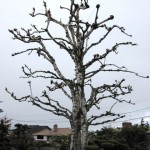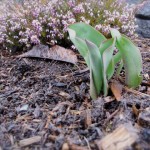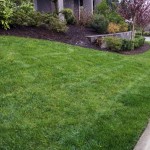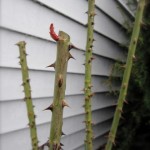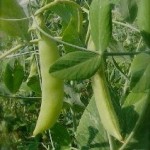Cool season crops
March 8, 2009 @ 5:26 pm
The weekend brought a fair amount of snow to the lowland areas of the Puget Sound, but there was still enough breaks of sunshine and warmth to think about starting your vegetable garden.
This is a great time to plant some cool season crops, or vegetable plants that are best suited for cooler temperatures, an average of 50 to 65 degree F. Cool season crops include beets, lettuce, collards, radish, peas, leeks and spinach and others. They’re grown in the spring or fall, and often don’t thrive during the warmer summer months (they’ll bolt, which means they’ll go to flower, leaving you with a bitter crop).
By contrast, warm season crops shouldn’t be planted until later because those crops require warmer temperatures to thrive. These crops includes tomatoes, potatoes, cucumbers, squash and corn. In the Puget Sound, warm season crops generally shouldn’t be planted until mid-May. If planted too early in soil that is cold and damp, these seeds won’t grow well and may not set fruit for a long while.
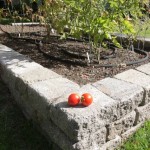 I recommend growing vegetables in raised beds, wherever possible. Your bed could be as simple as a large mounded pile of soil, or as fancy as one made from cedar boards or, as pictured to the left, made from RomanStack blocks. Raised beds help drain water better and warms the soil up quicker so that you can extend your planting season. It helps keep weeds out of the bed, and prevents your soil from becoming too compacted from excess foot traffic. Ecoyards has made several lovely raised beds for clients, including the one pictured at left.
I recommend growing vegetables in raised beds, wherever possible. Your bed could be as simple as a large mounded pile of soil, or as fancy as one made from cedar boards or, as pictured to the left, made from RomanStack blocks. Raised beds help drain water better and warms the soil up quicker so that you can extend your planting season. It helps keep weeds out of the bed, and prevents your soil from becoming too compacted from excess foot traffic. Ecoyards has made several lovely raised beds for clients, including the one pictured at left.
The soil in my cedar raised beds is much warmer than elsewhere in my landscape, so I went out this afternoon, added organic matter to the beds (compost and a little alfalfa meal) and dug it into the soil. I was ready to plant. I planted peas (‘Cascadia’ and ‘Sugar Snap’) spinach (‘Olympia), radishes and a gourmet blend of lettuce from seed. I also transplanted some collards and broccoli that I picked up at Swanson’s Nursery.
Here are some cool-season crops that you can start outdoors from seed: radish, swiss chard, beets, mustard greens, onions, parsnips and spinach. Here are the cool-season crops that do best when started indoors and transplanted (or you can pick up vegetable starts at a local nursery): cauliflower, broccoli, brussels sprouts and celery.
Western Washington University Extension has some great resources for all aspects of gardening.
Filed under Seattle Hardscaping, Vegetable Gardening Permalink · No Comments »
